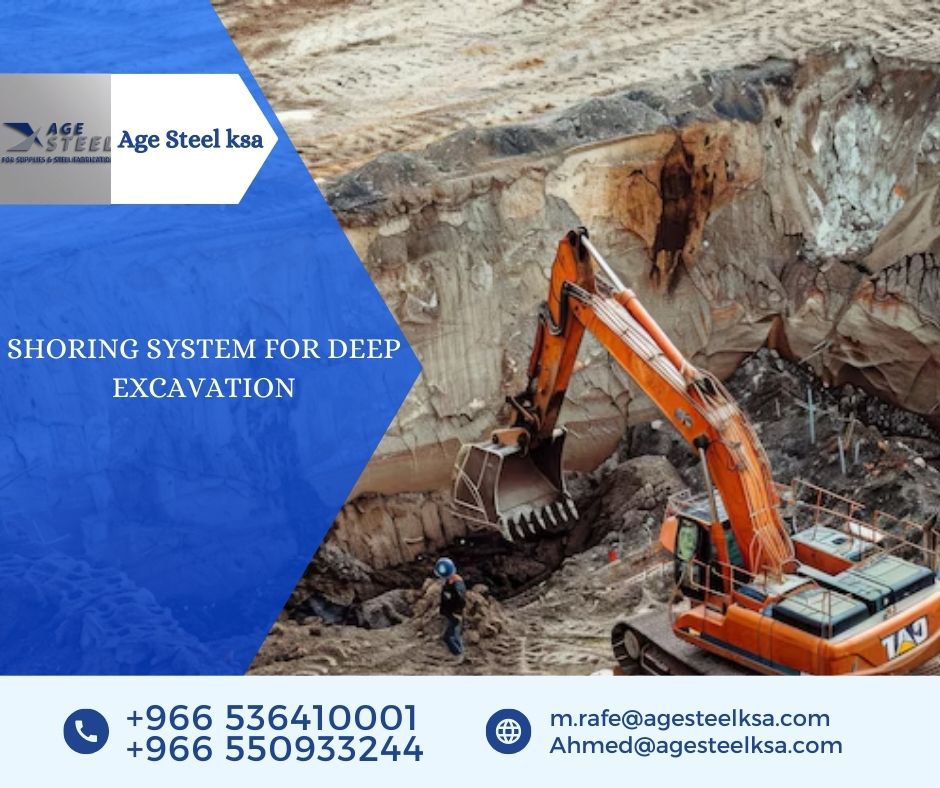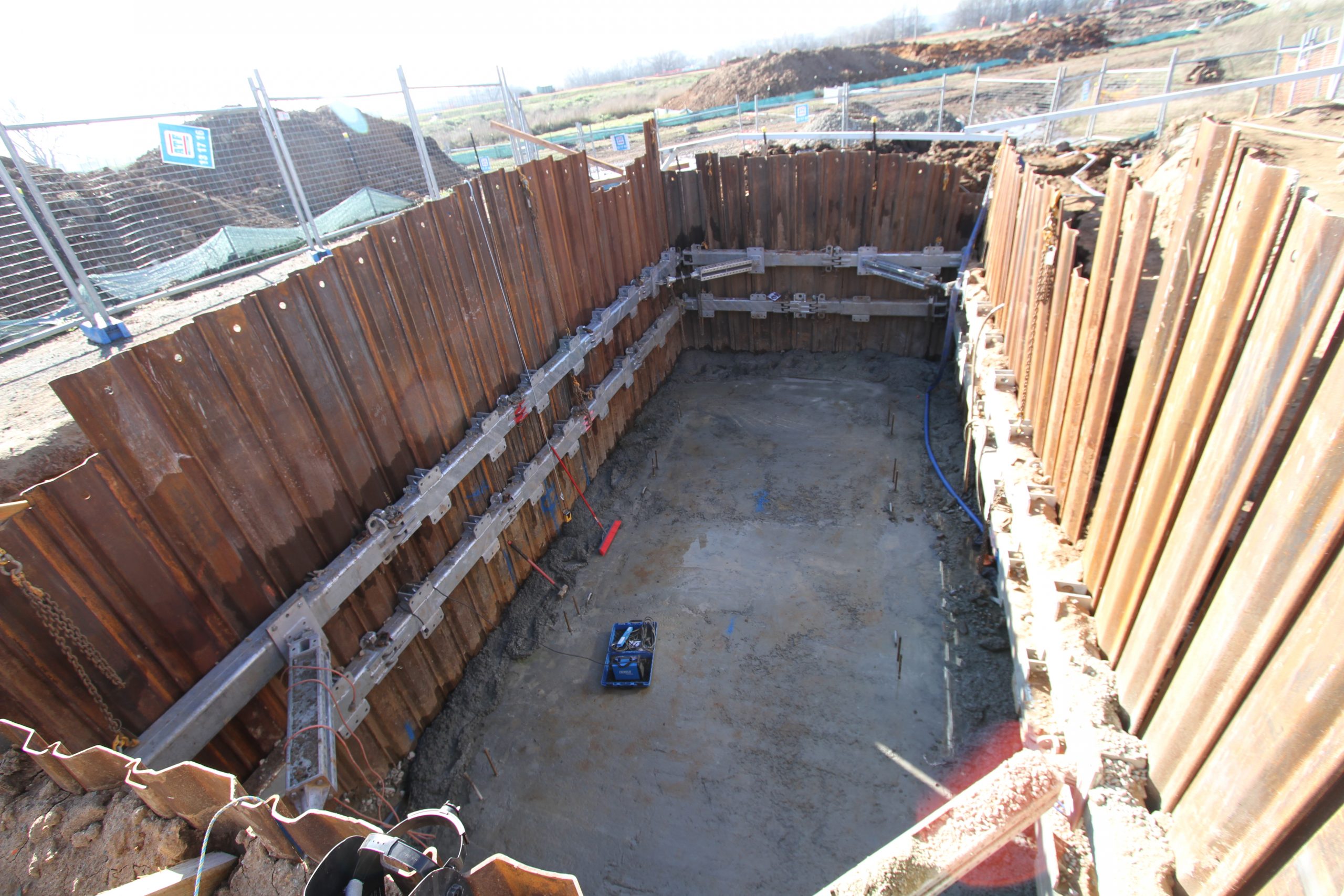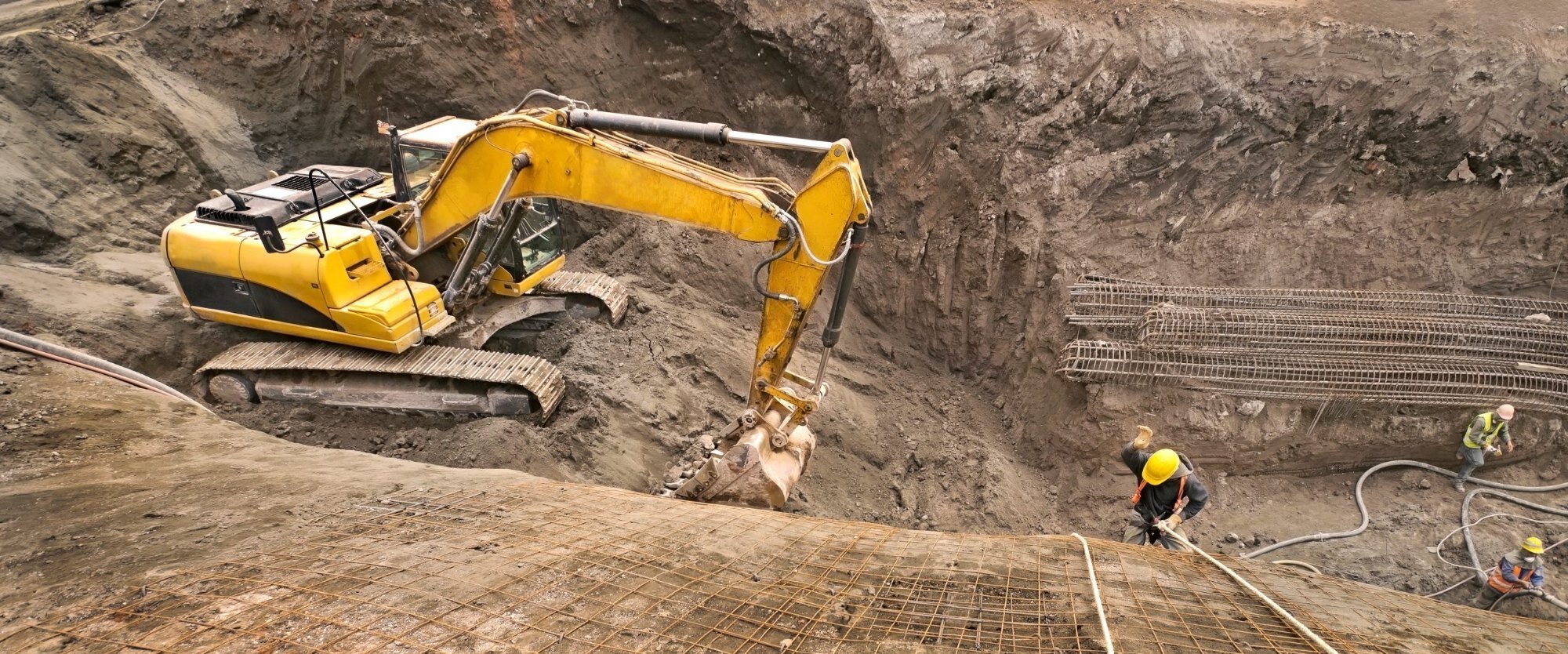
The shoring system for deep excavation is an essential engineering technique used to stabilize soil during deep foundation works. It ensures that excavation projects are executed safely and efficiently, especially in urban areas where nearby structures, roads, and utilities must be protected. Whether the goal is building underground parking, basements, or metro lines, a properly designed shoring system for deep excavation is the backbone of any deep foundation construction project.
A shoring system for deep excavation refers to a temporary or permanent structural support used to retain soil during excavation operations. It prevents soil collapse, controls groundwater intrusion, and ensures the structural safety of surrounding buildings. The efficiency and reliability of the shoring system for deep excavation are directly related to proper soil analysis, depth, groundwater levels, and the project’s complexity.
There are various types of shoring systems used depending on the project needs, including:
A well-engineered shoring system for deep excavation contributes significantly to construction safety and project efficiency. It:
The use of modern technologies and durable materials enhances the effectiveness of these systems, especially in harsh environmental conditions.
Each shoring system for deep excavation is chosen based on geotechnical conditions and the depth of excavation:
Uses steel beams and timber lagging to retain soil. It’s ideal for dry and cohesive soils.
Interlocking sheets form a continuous wall. It is common in wet conditions and supports deep excavations.
Interconnected concrete piles for tight spaces or deep excavation projects.
Thick concrete walls built in trenches, often supported by steel frame structures.

Steel is a key component in any shoring system for deep excavation. From soldier piles to struts and bracing frames, steel provides high strength and flexibility. Professional structural steel fabricators help deliver precisely engineered supports that conform to site-specific designs. The use of galvanized sheet metal protects steel components from corrosion, especially in moisture-rich environments.
In Saudi Arabia, site conditions often require a hybrid approach to excavation. One such method is benching excavation, which involves cutting soil in steps to reduce pressure. Combined with a well-designed shoring system for deep excavation, this technique enhances safety and provides structural stability.
Deep excavation safety is at the heart of every successful project. A reliable shoring system for deep excavation prevents cave-ins, protects workers, and ensures compliance with local and international safety codes.
Key safety practices include:
Not all projects are the same. That’s why the shoring system for deep excavation must be adaptable. Modular systems like the steel trench box can be assembled on-site and are especially useful in confined spaces. For projects requiring permanent supports, steel-reinforced systems or diaphragm walls with steel frame integration are preferred.

The installation of sheet metal piles is one of the most effective techniques for temporary earth retention. Choosing high-quality materials from certified vendors is key. Reputable suppliers provide both quality products and technical support for long-term integrity of deep excavation shoring systems.
A robust shoring system for deep excavation is vital for safety, efficiency, and project success. It combines engineering expertise with high-quality materials such as galvanized sheet metal, steel supports, and modular systems. Whether working on a metro project or a residential basement, the choice of shoring method and supplier greatly influences project outcomes.
By integrating modern techniques such as benching excavation, ensuring deep excavation safety, and using proven suppliers, construction teams can achieve stability, speed, and compliance in all deep excavation efforts.
